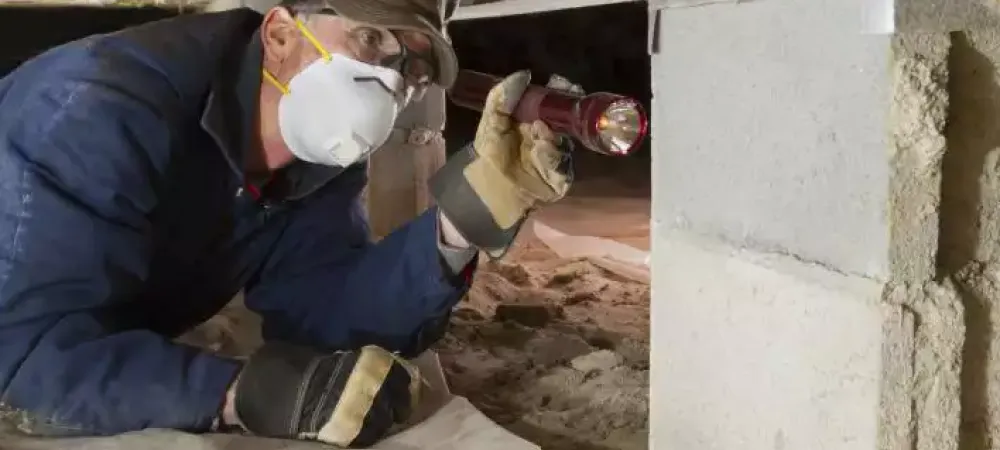What to Expect During a Termite Inspection and How It Can Save You Thousands

Termites can cause serious damage to your home without you noticing right away. In Midwest states such as Minnesota, Nebraska, Iowa, and Colorado, these pests are becoming increasingly common, especially during the spring and summer months when moisture levels are high. Scheduling a thorough termite inspection with trusted local experts, such as Olson's Pest Technicians, is the best way to prevent hidden damage and save thousands on repairs.
The Quick Answer
A professional termite inspection is a detailed process in which a trained inspector carefully examines your home, from the outside to the inside, for signs of termites. The inspection usually takes between 45 and 75 minutes. Identifying problems early can prevent serious damage and costly repairs.
Why Termite Inspections Are Critical in the Midwest
Termites are often called “silent destroyers” because they quietly cause significant damage to wood structures over time, often long before visible signs appear. According to the University of Minnesota Extension, “Termites can remain hidden for years, feeding on wood structures. Regular inspections are necessary to prevent serious loss”. The University of Nebraska-Lincoln’s Department of Entomology emphasizes that subterranean termites “live in the soil and break down cellulose (wood) for food, causing billions of dollars in damage each year to homes and structures,” and stresses the importance of integrated management approaches for protecting homes, pets, and people.
In the Midwest, moisture from spring thaw and seasonal rain creates favorable conditions for termites, making routine inspections particularly critical for early detection and effective control.
What Happens During a Professional Termite Inspection? (Detailed Process)
- Initial Consultation and Homeowner Discussion:
Your Olson's Pest Technicians inspector starts by talking with you about any recent pest activity, previous treatments, and areas that concern you. This initial chat helps the inspector decide where to focus their attention. If your basement leaks or there is visible damage near the floor, these become key points of inspection. - Exterior Inspection of the Property:
Next, the inspector walks slowly around your house, examining all sides. They look for mud tunnels, which are telltale signs that termites are traveling between the soil and your home. They also check for damaged or blistered paint, siding, wooden fences, decks, and porch supports. In colder states like Colorado and Minnesota, special attention is given to areas that remain moist due to snowmelt or rain. The inspector also examines nearby trees, stumps, and firewood piles that may be harboring termite activity. - Foundation and Substructure Checking:
The inspector then closely examines your home’s foundation. They look for cracks, soft spots, or tunnels in the ground-level or basement support beams. In states like Nebraska and Iowa, crawlspaces and slab foundations are common areas where termites can hide, so inspectors pay special attention to areas underneath porches and around doors or window frames. Signs such as mud tubes or damp wood are clear indicators of a potential problem. - Inside the Home: Room-by-Room Inspection:
The inspector moves through the inside of your house, analyzing every room. They look at baseboards, window frames, door casings, kitchen cabinets, and laundry areas. The inspector taps on wood with a screwdriver or other tools to listen for hollow sounds—another sign of termite damage. If you have finished basements or new rooms, these receive extra scrutiny because they often have new entry points for termites. Additionally, plumbing penetrations, such as those under sinks and behind toilets, are inspected for leaks or hidden defects. - Attic and Structural Wood Checks:
Many homeowners forget the attic, but it is a common place for hidden activity. The inspector climbs up and inspects support beams, joists, and rafters for tunnels or damaged wood. In states like South Dakota or Wyoming, roof leaks and blocked vents can make attics more vulnerable to termite invasion, so a thorough inspection is essential. - Using Special Equipment:
Termites are attracted to moisture, so inspectors often use moisture meters to test for damp spots behind walls or under floors. They might also use infrared cameras or sound-detection devices to find termite activity that is hidden from view. These tools are especially useful for detecting problems inside walls or deep in floors. - Signs of Termites That the Inspector Looks For:
The inspector records clear signs such as mud tubes, termites’ droppings called frass, discarded wings from swarmers, hollow-sounding wood, or faint clicking sounds behind walls. In regions such as Minnesota, Nebraska, and Colorado, inspectors are trained to recognize local termite behaviors, which can help identify problems early. - Follow-Up and Reporting:
After the inspection, you will receive a detailed report that describes what the inspector found. It includes photographs of any evidence and specific recommendations for treatment or prevention. The inspector can answer all your questions and walk you through the next steps. This helps you understand what exactly is happening and how to fix it.
Local Termite Risks and Why They Matter
Subterranean termites, particularly those of the Reticulitermes species, are the most common threat in states such as Iowa, Nebraska, and Minnesota. These termites live underground and build mud tubes to reach wood in your home. Swarming, which signals the presence of a nearby colony, typically occurs in the spring when temperatures rise. The Iowa State Extension emphasizes the importance of soil treatments and bait systems tailored to your specific soil type and climate. The USDA Forest Service explains that early intervention and integrated pest management are the most effective methods for preventing serious damage.
Prevention Tips for Midwest Homeowners
If you want to protect your home from termites, here are some important prevention tips. These steps can reduce your chances of a costly infestation:
- Keep mulch and soil at least six inches away from your home’s foundation.
- Fix plumbing leaks promptly and ensure water drains away from the house.
- Ventilate crawlspaces and attics to prevent moisture buildup.
- Remove firewood, stumps, and debris from around your property.
- Seal cracks and gaps in your foundation or around utility lines.
- Schedule regular inspections with Olson's Pest Technicians, especially after heavy rains or snowmelt.
Taking these steps along with regular inspections will help keep your home safe from termites.
When to Reach Out to Olson's Pest Technicians
If you see mud tubes crawling along your foundation, notice discarded wings on window sills, find hollow or damaged wood when tapping, or see small piles of frass, don’t wait. Contact Olson's Pest Technicians immediately. Early professional assessment and treatment are crucial in preventing termites from causing significant damage. Addressing the problem promptly can save you thousands and protect your home’s stability.
Why Early Detection and Expert Inspections Save You Money
The key to avoiding costly repairs is early detection. Trust Olson's Pest Technicians to perform detailed termite inspections that are customized for the Midwest’s unique climate and construction styles. Their experts use advanced tools and regional knowledge to identify early signs of activity that often go unnoticed by homeowners. Whether you are buying a property or maintaining your existing home, an inspection from Olson's ensures peace of mind and long-term protection. Call today to schedule your insect-free, termite-proofing appointment or request a free estimate.
Sources
- University of Minnesota Extension. “Subterranean Termites.” Extension.umn.edu, 2024, https://apps.extension.umn.edu/garden/diagnose/insect/indoor/flies/medium/subterranean-termites.html.
- University of Nebraska-Lincoln, Department of Entomology. “Urban Entomology.” HLES.unl.edu, 2023, https://hles.unl.edu/insects/urban-entomology/.
- Iowa State University Extension and Outreach. “Termite Control in Iowa.” Yardandgarden.extension.iastate.edu, 2025, https://yardandgarden.extension.iastate.edu/encyclopedia/termite-control-iowa.
- U.S. Department of Agriculture, Forest Service, Southern Research Station. “Termites: Biology and Management.” Srs.fs.usda.gov, 2025, https://www.srs.fs.usda.gov/pubs/misc/misc_hg064.pdf.
- Su, Nan-Yao, et al. “The destructive subterranean termite Reticulitermes flavipes can survive and spread across a wide range of climates, including arid areas.” PeerJ, vol. 12, 2024, https://pmc.ncbi.nlm.nih.gov/articles/PMC10909367/.
